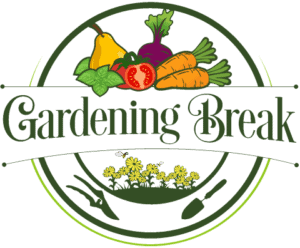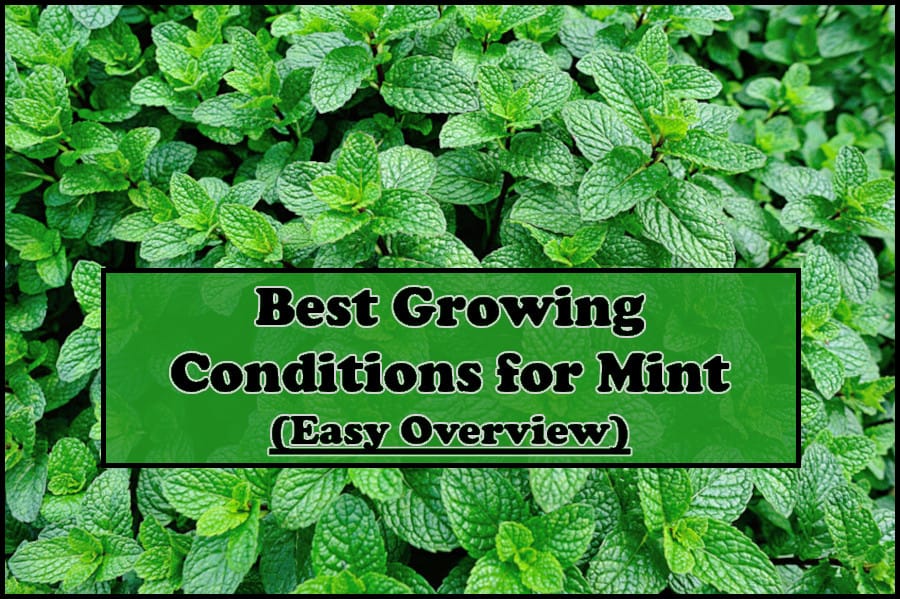
If you give your mint plants the right growing conditions, they will reward you by growing rapidly and producing lots and lots of fresh leaves. To make it as easy for you as possible, I have written this article where I cover everything you need to know about giving mint the right conditions when it comes to sunlight, temperature, watering, soil, fertilizer, and spacing.
First, here is a table to give you an easy overview of the best growing conditions for mint. Below it, I explain each of them in more detail and share some tips, that I have learned over the years.
| Sunlight | Full or partial sun |
| Temperature | 65-70° F (about 18-21° C) |
| Watering | Only when the top inch (2.5 cm) or so of the soil is dry |
| Soil type | Nutrient-rich, moist soil |
| Soil pH | Slightly acidic to neutral soil pH (about 6.0-7.0) |
| Fertilizer | Fertilize once in the spring with a slow-release, complete 16-16-16 fertilizer |
| Spacing | Use a 12 inch (30 cm) or bigger pot |
Below, I share tips and go into more detail with precisely how you can give your mint the best conditions. I cover the tips in the same order as they are mentioned in the table above, so if you are looking for something specific, you can just scroll directly to it.
Sunlight Requirements for Mint Plants
Mint seems to perform best when exposed to full sun, but it can also grow well in partial sun. Morning sun seems to work better than afternoon sun because the sunlight in the afternoon can be very intense compared to in the morning.
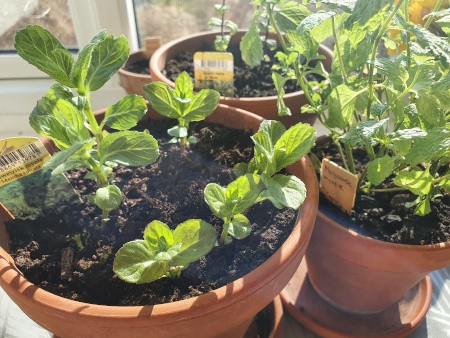
Mint can also grow in partial shade and will actually grow pretty well like that too, so don’t think you can’t grow mint just because you don’t have a lot of sunlight. Just don’t expect it to grow as fast and get as dense as if there was a lot of sunlight.
Mint can grow really well both indoors and outside. If you grow it outside, finding a sunny spot should be easy enough, but if you grow it indoors, it is best to place your mint next to a sunny window.
Generally speaking, the more sunlight mint plants get, the faster and bigger they grow, and the more productive they are, but it can also be too much. Especially during the warmest and sunniest weeks of the summer, where the sunlight in the afternoon is as intense as it gets.
To prevent mint plants from being overexposed to sunlight, place them somewhere that is exposed to direct sunlight from the early morning until the early afternoon but partially shaded later in the afternoon.
As I wrote at the beginning of this article, mint is very versatile and will adapt to most climates. This also goes for sunlight, so you generally don’t have to worry too much about your mint getting too much as it can take a lot.
If you live in an extremely sunny area, though, you should keep an eye on the top leaves to see if they get scorched or start to wilt, as those are signs of overexposure to sunlight.
Best Temperature for Mint Plants (And What They Tolerate)
The ideal temperature for growing mint is between 65-70° F (about 18-21° C). Mint leaves and stems die at temperatures below 32° F (0° C), but the roots can survive temperatures below the freezing point because they are protected by the soil, and will likely produce new green growth in the spring once it gets warmer.
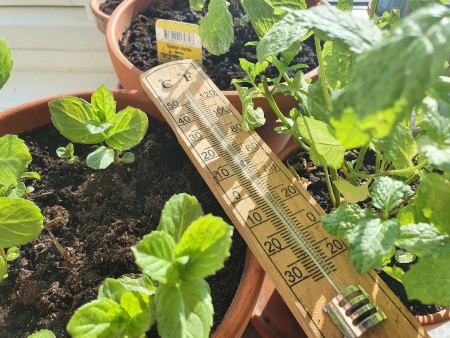
I have already said it, but I’ll say it again. Mint is versatile. And that also shows when it comes to the temperature.
Mint can grow at temperatures as low as the freezing point, but as with other plants, the lower the temperature is, the slower mint grows, and the higher the temperatures are, the faster it flowers. Therefore, aim for 65-70° F (about 18-21° C) as I wrote above, but don’t stress over it if it is a bit too cold or too warm.
It is also important to say that like other herbs, mint might like warm and sunny weather during the day but prefers darkness and cooler temperatures at night, so if you grow it outside, don’t worry about it getting cold at night, as long as it doesn’t get below the freezing point.
If you grow your mint indoors at room temperature, you generally shouldn’t have to worry about the temperature. Room temperature is perfect for mint in my experience. In fact, all the potted mint plants you see in this photo are growing in my living room at room temperature next to a sunny window, and they are thriving.
Tips for Watering Mint (And How to Avoid Overwatering)
Water mint when the top inch of the soil is dry. Check by carefully pressing a finger into the soil. If your finger comes out completely dry, water your mint, and if it is moist, you don’t need to water.
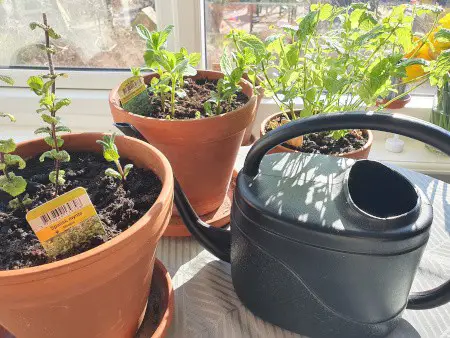
Instead of watering mint plants on a fixed schedule, wait for them to signal that they need water by allowing the top inch of the soil to become dry before you water it, as I explained above.
Mint plants’ watering-needs change as the plants grow and as the season and weather change, so I really recommend that you do NOT water your mint on a fixed schedule, but like I explained above instead, as you are very likely to either overwater or underwater your mint at different times otherwise.
Overwatering is one of the most common problems people have when growing mint. I have written a post where I explain how to identify overwatering early and how to save an overwatered mint. You can find the post on this link, but here are the basics you should know.
Underwatering is not a big threat to mint as it is technically drought resistant (source), but if your mint is completely dry for too long, the leaves will begin to fall off, and the stems will dry up, but the roots will survive and sprout new growth once the soil gets moist again.
An easy but excellent thing I do and recommend you do is to water your mint from the bottom. There are several benefits to this including better growth and less risk of overwatering. You can read more about how to do it and why it is such a good idea on this link.
Best Soil for Mint (Nutrients, pH, Drainage, and More)
The best soil for mint is nutrient-rich, well-drained soil with a slightly acidic to neutral pH (about 6.0-7.0). Mint plants grow best if the soil stays moist but never wet. Mint is drought-resistant, so if the soil dries out, the plant itself might die, but the roots will survive and produce new growth once there is moisture in the soil again.
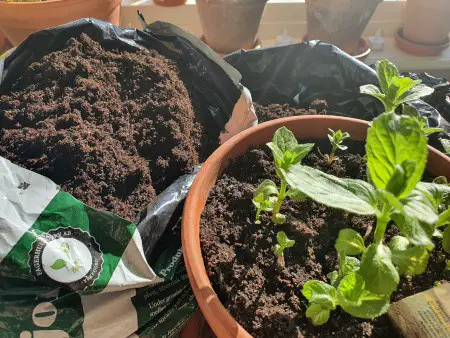
When I bought the mint plants, you can see in the photos in this post, I also bought some peppermint seeds, so the employee at the plant nursery told me something great about the soil for them, that I hadn’t thought too much about before that.
If you grow mint from seed, you might want to start with a soil mix that is designed specifically for seedlings, as some of the nutrient-rich soils can be too strong and “burn” the seedlings before they get big enough to take advantage of the nutrients.
Many soil mixes also contain a lot of sticks and other organic matter, which are GREAT for mint plants, but can cause some trouble if you’re growing from seeds as the sticks or woodchips or whatever it might be, can act as a physical barrier and block the seedlings, preventing them from sprouting properly.
I have a bag of soil for seedlings in the photo above (the bag on the left), and as you can see, there aren’t any sticks, woodchips, or any other things that might block the seedlings. The soil in the pot has quite a bit of that, but that’s fine now that the plant is as big as it is.
Therefore, it is best to use a seedling soil mix for mint seeds and seedlings and then transplant them to nutrient-rich soil with a lot of organic matter once the plants begin to produce a couple of sets of true leaves.
If you use some soil like that, the pH value will generally be fine and you don’t really have to think too much about it unless you really want to optimize the growth of your mint.
I usually just buy some good, organic, nutrient-rich potting soil for my mint plants from the plant nursery, and it works really well for me, but it can sometimes be a good idea to mix a bit of sand into the soil to make the drainage a bit better.
Best Fertilizer for Mint (How Much and How Often)
A popular way to fertilize mint plants is by mixing one teaspoon of a slow-release, complete 16-16-16 fertilizer per plant into the soil once in the spring. Another simple way is to use a liquid, all-round fertilizer for herbs and vegetables that you mix into the water you water your mint with once about every 2-4 weeks depending on the size of the plants (small mint plants should be fertilized less often than big ones).
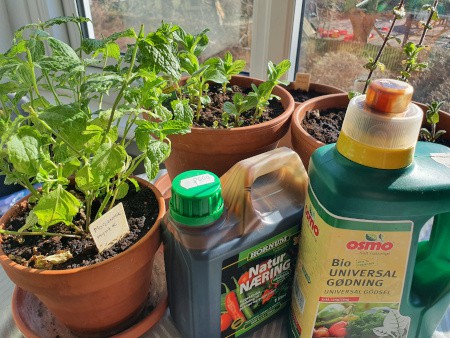
I have mostly just fertilized my mint with an all-round, organic, liquid fertilizer for herbs and vegetables that I mix into the water that I give to my plants once about every 2-4 weeks, depending on big the plants were.
Small plants cannot take as much fertilizer as big plants, so start by fertilizing this way once every month or so, and as the plant gets bigger, you can increase the frequency gradually to once about every two weeks.
This method has always worked really well for me, but I recently learned about another method I might try next year. Let me tell you about it.
Before I wrote this part of the article, I read a paper from Utah State University written by Kristie Buckland and Dan Drost, Vegetable Specialists, about growing mint. In it, I found this quote:
One early spring application of a slow release, complete fertilizer incorporated into the soil will supply adequate nutrients for mint. Use one teaspoon of a 16-16-16 fertilizer per plant as growth resumes in the spring.
“Mint in the Garden” – Kristie Buckland and Dan Drost, Vegetable Specialists. Utah State University (source)
No matter which method you use to fertilize your mint plants, you should know how to tell if your plants are being overfertilized, as overfertilizing can damage and even kill your mint plants.
Signs of overfertilizing mint include leaves turning yellow and brown, leaves drying out, and slowed growth.
Space Requirements for Mint (Potted and in the Ground)
There are a lot of reasons why you should always give your plants enough space to grow. They can grow much faster and get much bigger if they have enough space and you reduce the risk of several problems significantly. You can read more about why it is so important here.
Mint grows best in pots that are 12 inches (30 cm) or more in diameter. Mint can technically grow in pots of any size, but the smaller the pot is, the smaller the plant gets. It is generally not recommended to plant mint in the ground as it will spread indefinitely and use as much space as possible.
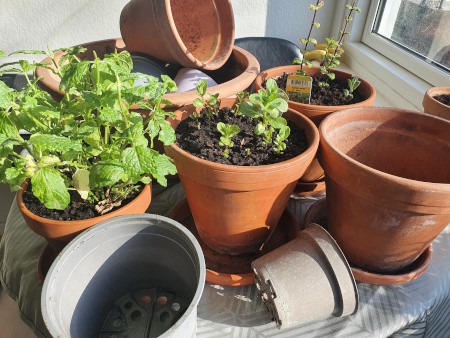
Mint plants spread like wildfires, so they can be extremely invasive as they spread sideways indefinitely by growing horizontal runners. That is why it is usually not recommended to grow mint directly in the ground, as it will quickly spread and take over more and more of your garden. (source).
If you want to grow your mint in the ground, it is a really good idea to think of a way to restrict it to an isolated area. You can use isolated garden beds or dig a hole and put a potted mint into it to prevent it from getting out of control and taking over your garden because it can be really difficult to get rid of once it establishes itself.
I really recommend growing your mint in a pot to save yourself from a huge headache later.
Even though mint spreads rapidly sideways, its roots don’t go too far down, so width is more important than depth when you choose a pot for your mint plant.
I have written a post to help you find the right size pot made from the right material for your mint, as both of those things can have a huge effect on how well your mint grows. You can find that post here.
If you grow your mint in a small pot, you are almost guaranteed that it will get rootbound eventually, which basically means that the roots run out of room to grow. This can cause an oxygen deficiency and reduce the plant’s ability to obtain water and nutrients, causing it to grow slower and slower and eventually stop entirely.
The fact that mint spreads like wildfires is also why it is generally not recommended to plant different mint varieties together, as they will quickly get mixed. Other than making it difficult to tell which is which, it can actually also cause the plants to lose some of their individual taste and smell.
You can read more about growing different mint varieties together in this post, where I also share some tips that actually allow you to do it without them getting mixed and without needing a huge amount of space.
